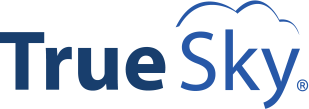How True Sky’s Audit Trail Feature Can Help Protect Your Business

In today’s collaborative work environment, business files are often being worked on by many people at once. One person:
- Adds a budget category and fills out some numbers
- Another adjusts their department’s sales figures
- Someone else runs a quick calculation and fixes an incorrect entry
In the past, these things would be done on each person’s individual copy of the file, with updated files being emailed around to team members. Hopefully, everyone kept up with which version of the document was the most up-to-date – but nevertheless, the process was often confusing, and meant sifting through multiple copies of the same document.
Today, widely available tools like Google Sheets have made simultaneous collaboration in the cloud a reality. However, these tools generally aren’t the best budgeting software to use, which may include sensitive or confidential information.
That’s why many businesses turn to business budgeting software like True Sky. True Sky offers the security features businesses need, in addition to the ease and familiarity of the Excel interface.
And True Sky offers something else, too: built-in audit trails.
What’s an audit trail?
Simply put, an audit trail is a series of records that document every step taken in a business transaction. It could refer to:
- Paper documents – a series of invoices and receipts
- Electronic records – an emailed receipt and a debit on a business account
Audit trails are important because they provide a way to keep track of the money that goes in and out of your business – plus, of course, they provide the documentation you’d need in the event of an internal or external audit.
In software like True Sky, an audit trail simply means that every change to a document is recorded, along with which user made the change.
How can audit trails make your budgeting process easier?
You’ve probably experienced this situation before: you’re working with a document that’s public to your department, and you notice that an entry you added yesterday is suddenly missing. You can’t go back and see who made what change when, because that information isn’t recorded anywhere.
The only way to find out why that change was made is to start asking your team members – maybe you send out a group email asking for details. People open the email, start looking for the exact change you mention, and perhaps start wondering about how that change might affect parts of the budget that they’re in charge of. By the time the person who actually made the change writes back to explain what they did, you may have multiple other colleagues with their own questions that need to be answered.
You can see how much time this seemingly simple issue can take up.
Now let’s look at this scenario when an audit trail is in place. You notice that your entry from yesterday has been deleted. You click on the audit trail entry, which lists:
- Any users who made changes
- When they made those changes
- What the new value is
With True Sky, users can even add attachments or comments to entries that give context to the numbers they’ve entered. This cuts down on the need for explanations or questions even further, as a user can insert any pertinent information directly into the document.
Fraud prevention, error detection, and more
Audit trails bring a much greater level of transparency to your budget process, which can be helpful in a number of ways.
For one thing, software with an audit trail feature holds users accountable for the entries and edits they make. Users who use questionable judgment, or who provide dishonest numbers, can no longer fly under the radar.
In the same way, audit trail entries can help your company detect and deal with errors. For example, if you notice the same person or same department making erroneous entries on a fairly regular basis, you may decide to hold a short training session with that individual or group to address the problem.
In addition, if your company was ever required to hand over accounting information to an external organization, you could rest easy knowing that each and every number in the budget was accounted for properly.
Interested in learning more about how to make your business budgeting process as transparent and safe as possible? Download our e-book 21 Ways Your Budgeting Process Puts Your Business at Risk.



